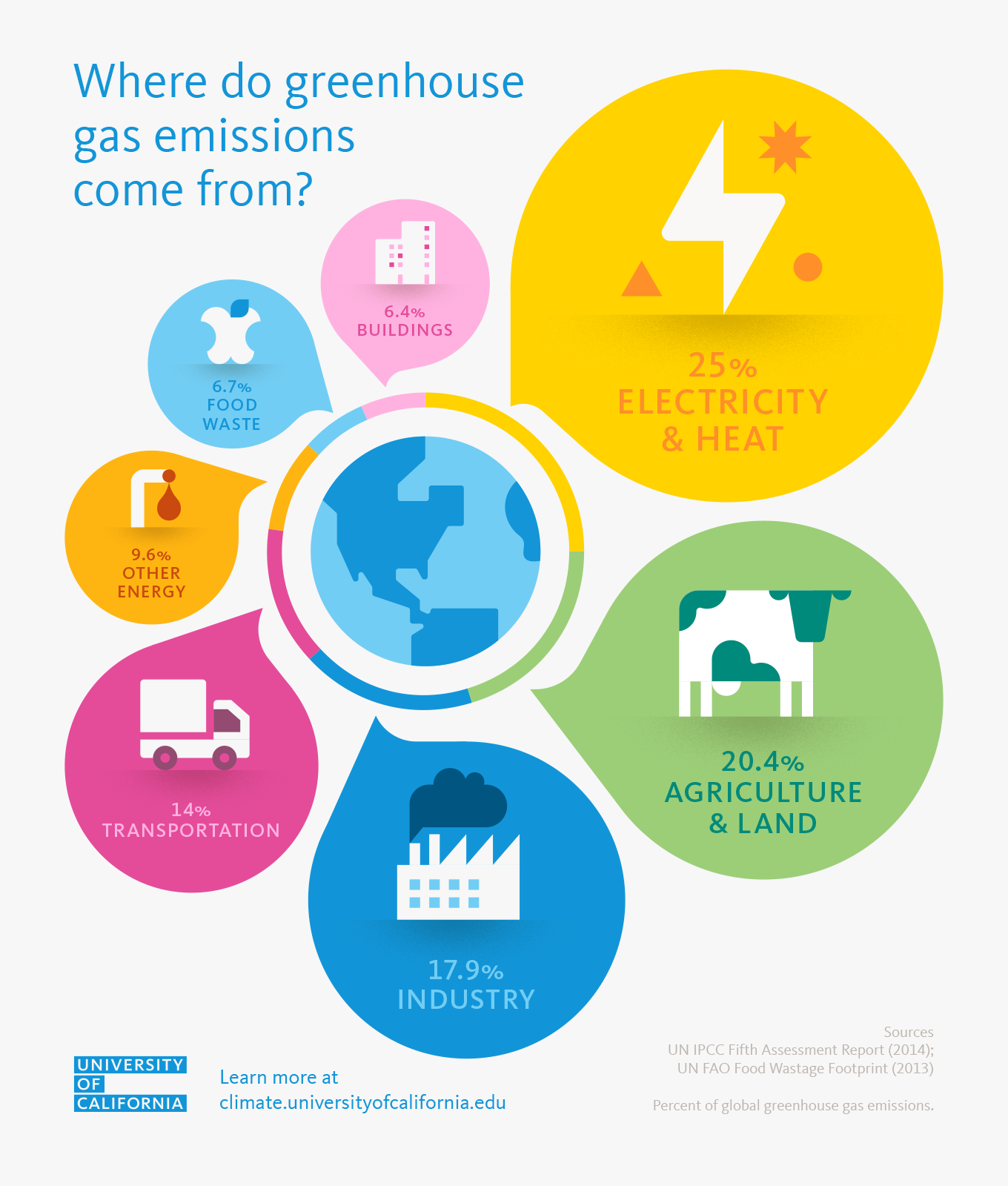“A lot of places — it’s complicated,” is a perfectly reasonable answer, so it’s understandable that most people don’t have this info at their fingertips. One 2014 study found that people tend to overestimate the effects of some of the more obvious and visible sources, like vehicle exhaust and deforestation, but largely overlook the effects of meat and dairy production.
Trying to account for all of the greenhouse gases around the world is no small task, and it’s not just CO2: it’s methane, ozone, refrigerants, and a variety of other gases and particles that contribute to warming the planet, all of which are tracked by the UN’s Intergovernmental Panel on Climate Change (IPCC).
This chart summarizes the global sources of greenhouse gases:

If there’s one key takeaway from this chart, it’s this: No single piece of the global economy accounts for the lion’s share of greenhouse gas emissions. In other words, there’s no main culprit, no magic bullet. To solve the puzzle of climate change, each piece requires attention, and each likely needs a different strategy. This may seem daunting, but the first step to solving a complex problem is to break it down into smaller, manageable parts.
So what exactly are these categories, and where can we have the most effect?

Electricity & Heat: This is power plants, steam plants, industrial sources of electricity and heat — this isn’t your use of heat or electricity at home. Burning of coal, natural gas and other fossil fuels is the largest source of greenhouse gas emissions worldwide. Switching to natural gas is an improvement over coal, but a transition to zero-emission sources of energy and heat (solar, wind, geothermal or nuclear) is needed to fully clean up our energy system.

Agriculture & Land: Roughly one-fifth of all global greenhouse gas emissions come from our use of land, mainly from deforestation and emissions from livestock. This also includes fuel used for agriculture, forestry and fishing, direct soil emissions and forest fires. Would going vegetarian make a difference? Short answer: Yes, but it would only address a small portion of what’s needed.

Industry: Manufacturing products for today’s world produces a lot of greenhouse gases — nearly 18 percent of global emissions. Metal production, chemical manufacturing and use, cement production and numerous other products from paper to semiconductors are significant contributors. And it’s not just the process of making something, it’s the waste we create in the process that also adds to the problem.

Transportation: Traffic jams. Smoggy cities. Perhaps the most visible source of emissions comes from transportation. But we don’t see all of it: Aviation, rail and refrigeration in transport all contribute to the greenhouse gases from transportation, adding up to 14 percent of global greenhouse gas emissions. Electric cars are on the rise, but for these to be truly green depends on a clean source of electricity.

Other Energy: Even before we burn fuels, manufacturing and moving them around add emissions to the atmosphere. Petroleum refining to make fuel and other products, and fugitive emissions from leaking pipelines — particularly methane leaks, a gas that is roughly 25 times as potent a greenhouse gas as CO2 — are serious and challenging issues.

Food Waste: Did your parents always tell you to finish your food? They were right. Not only are we tossing food while people go hungry, food waste contributes 6.7 percent of global emissions. Food waste starts well before it leaves the farm, and continues through distribution, storage, at markets and restaurants, and all the way to your kitchen.

Buildings: Energy used in commercial and residential buildings, including refrigeration and air conditioning, and even fire extinguishers, contributes 6.4 percent of global emissions. All together, buildings emit roughly the same amount of greenhouse gases as the entire country of India. This is an area where we can all have a direct effect every day, starting in our homes and businesses.
Understanding where greenhouse gases come from is a key first step. Taking action presents another problem: ourselves. See how scientists are working with human psychology to help move us from apathy to action.
